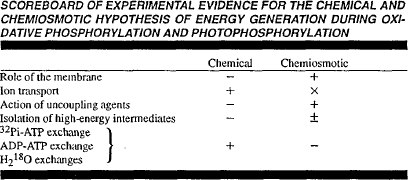Article contents
The Super Bowl and the Ox-Phos Controversy: “Winner-take-all” Competition in Philosophy of Science
Published online by Cambridge University Press: 28 February 2022
Extract
Imagine two theories in a scientific controversy cast as competing teams in the Super Bowl, and you may get a “Scoreboard of experimental evidence” such as the following, published in a review article in 1970 (after Racker 1970, 135):

This figure compares two hypotheses in a debate in bioenergetics in the 1960s and 70s known as the Ox-Phos Controversy (Rowen 1986; Allchin 1990; Weber 1991). But its format, suggested by its title, bears a striking resemblance to the half-time recaps in televised football games: parallel assessments in several categories ask us to compare, say, how many yards rushed, number of first downs, passes completed, evidence for the role of the membrane, or evidence for ion transport, etc. (see also Sindermann 1982). Why did the review author—Efraim Racker, a research biochemist—borrow the scoreboard framework from sports to convey his assessment in science?
- Type
- Part I. Philosophy of Biology
- Information
- Copyright
- Copyright © 1994 by the Philosophy of Science Association
References
- 4
- Cited by


